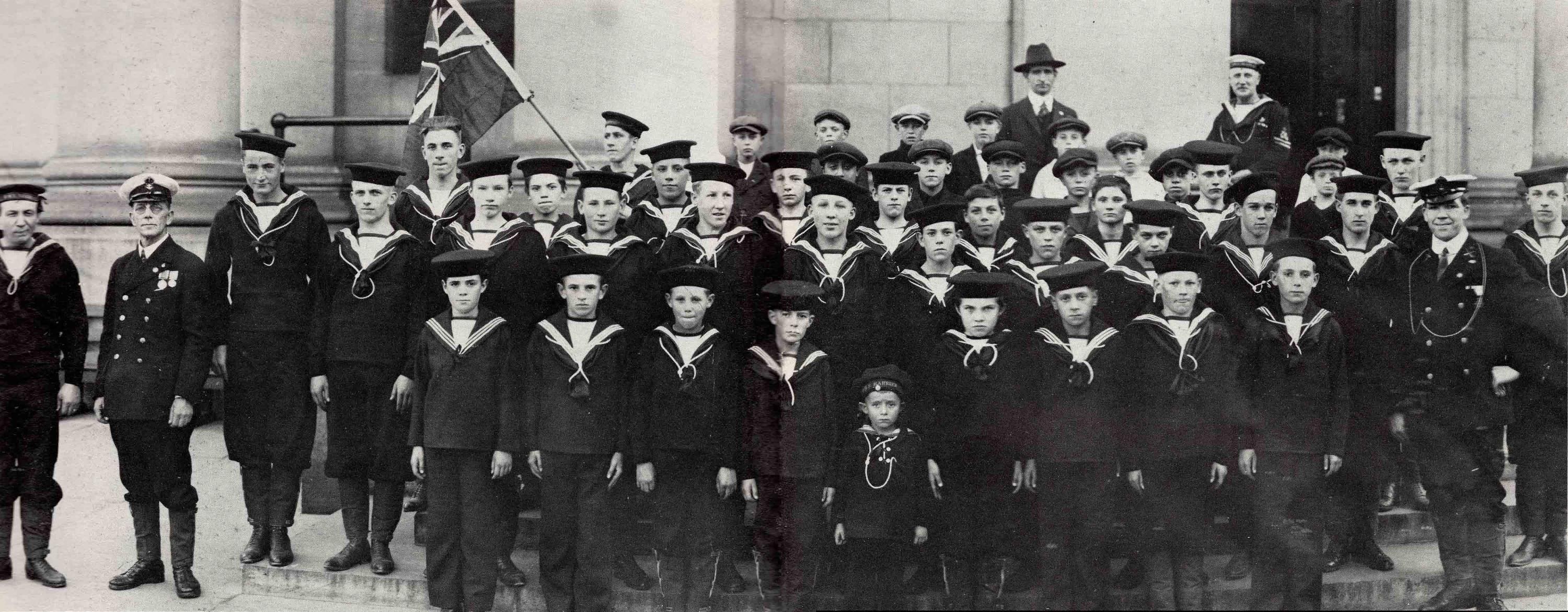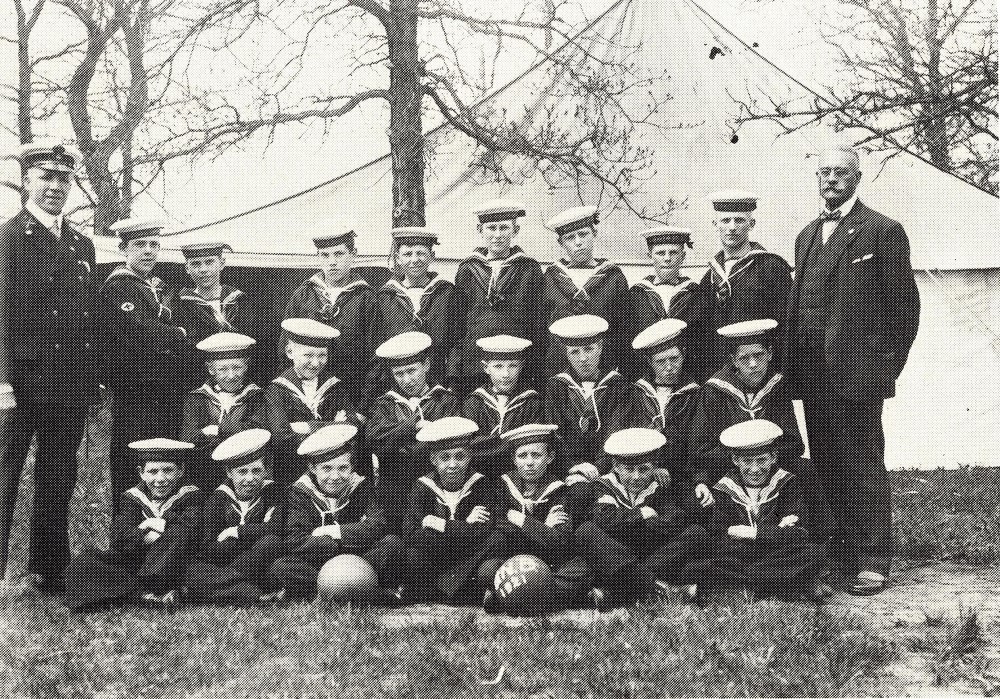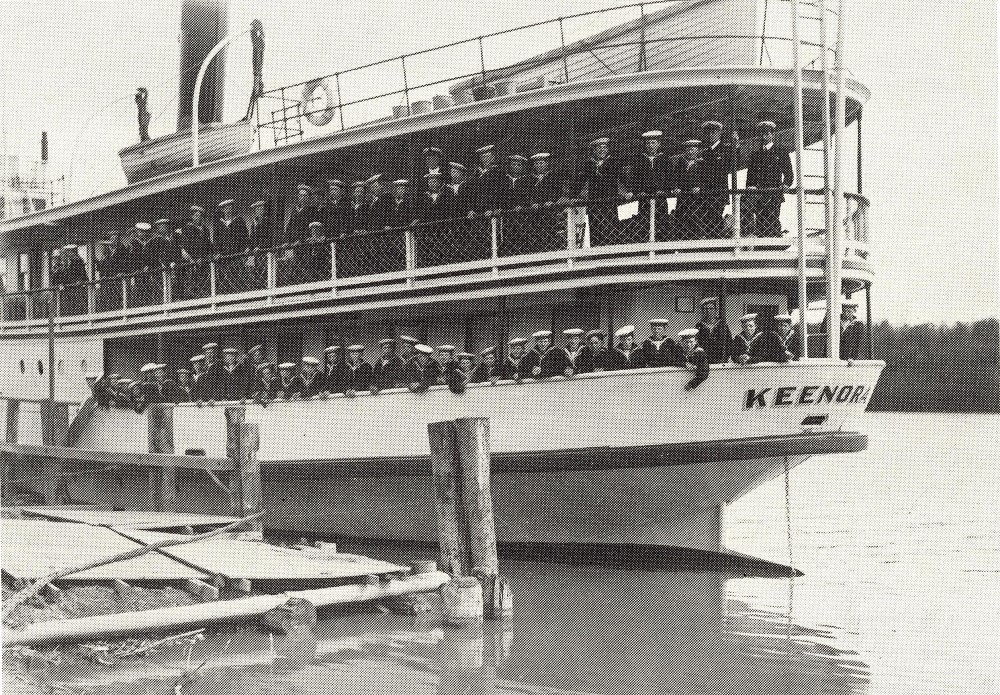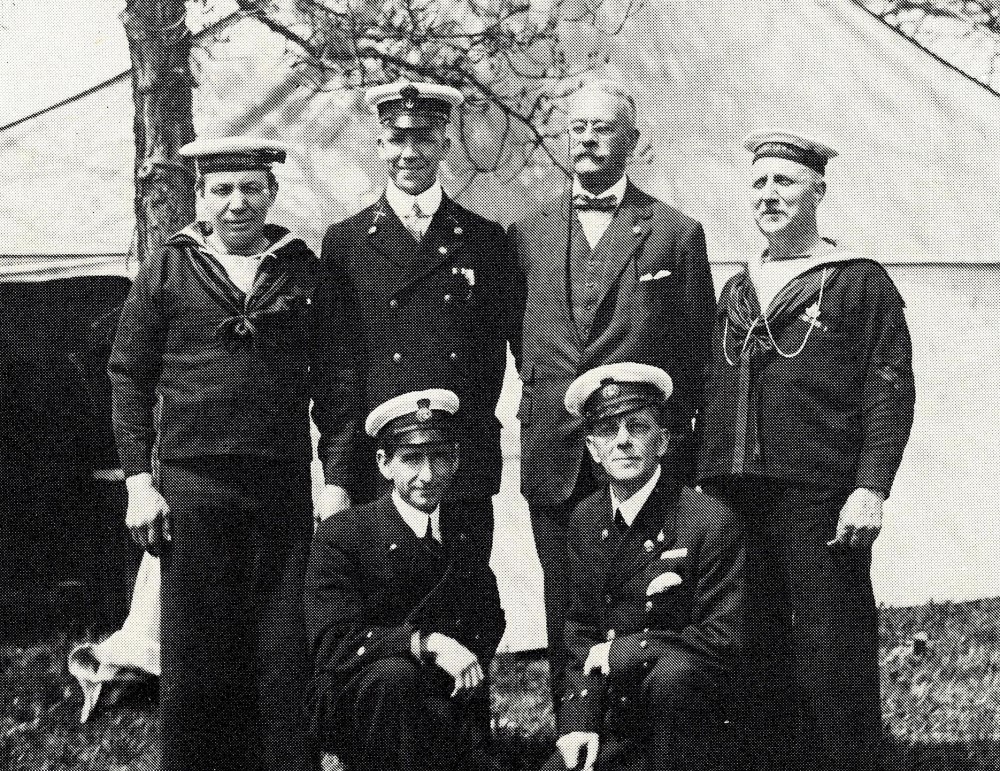

1920 - 1924
The Royal Canadian Sea Cadet Corps John Travers Cornwell V. C. had its beginning on June 28th, 1920. At a meeting on this date the Winnipeg branch of the Naval Veterans Association made a final decision to form a Boys' Naval Brigade in Winnipeg.
The formation of such a boys' organization had been discussed at length by the executive of the local association since their return from their national meeting in Victoria, British Columbia. While in that city the Winnipeg delegation had been impressed by the performance of the first Boys Naval Brigade established in Victoria by the Naval Veterans Association in 1917.
Recruiting commenced immediately, and boys wishing to join the brigade were asked to report to the Edward Building on Portage Avenue opposite the Eaton's department store on Friday evening, July 1, 1920. Arrangements had been made for training the boys in the various branches of seamanship. G.J. Dawes was in charge of the gunnery and swimming classes; H. McCrea, navigation; F.E. Fuller, seamanship; H. Smith, physical drill and ships routine; H. Weston, ambulance work; and Messrs. Salton and Foster, wireless telegraphy. The majority of the instructors were veterans with Royal Navy service.
Every assistance in establishing the brigade was promised by the Navy League of Canada and its Manitoba president, Mayor C.F. Gray of Winnipeg. Mayor Gray, with a background of many years under sail was instrumental in acquiring uniforms and quarters so necessary for the brigade.
The first public appearance of the Boys Naval Brigade was on October 21, 1920 when the sixty boys of the brigade participated in the Navy League fund drive. The campaign got under way when members of the brigade under the direction of Chief Petty Officer Dawes, paraded through the business section of the city in decorated floats representing a cruiser and a cutter. Later the same evening the brigade performed chores during a Ball at the Royal Alexandra Hotel in honour of the 115th anniversary of Trafalgar Day.
As the Boys Naval Brigade moved into its second year it became apparent that the financial strain on the Naval Veterans Association was far too great. Therefore, the Navy League of Canada became more involved in the operation of the brigade and eventually resumed full responsibility for the boys' organization.
From this beginning the Boys Naval Brigade flourished under the leadership of Chief Instructor, Mr. H.B. Weston. Not to be overlooked was the constant guidance and support provided by Mayor Gray and Mr. J. McLeod in their respective capacities of president and secretary, Manitoba division, Navy League of Canada.
Throughout the years 1921 to 1923 the members of the brigade continued their winter training in all facets of seamanship. The size of the organization however, had to be maintained at a maximum of sixty boys due to the shortage of uniforms and the restricted training facilities provided by the Edward Building.
The summer months afforded the brigade the opportunities to utilize their two cutters and participate in the combined cadet camp at Selkirk, Manitoba. As a point of interest, one of the cutters, a gift from Mayor Gray and his family, was used on the mail run between St. Paul, Minnesota and Fort Rouge prior to the commencement of railroad service in the 1880's. The summer camp, held for ten days each July on the banks of the Red River was always looked forward to with keen anticipation by the boys. A full daily routine allowed the brigade time to practice and improve the skills learned over the winter months.
 First photograph of Boys Naval Brigade cadets and instructors taken on the steps of the Bank of Montreal, Portage and Main Street, October 1920. |
|
 Boys Naval Brigade soccer team 1921. Instructor on left is Chief Petty Officer G.T. Dawes and gentleman on the right is Mr. E.J. Reynolds, local newspaper editor and Navy League supporter. |
 Cadets and instructors aboard S.S. Keenora prior to cruise on Red River, July 1921. |
With 1923 there came a change in name. Due to the anti-military posture then evident in the country, and the drive for international disarmament, it was deemed advisable to change the name of the organization to the less controversial Navy League of Canada Sea Cadets. This step was taken despite the fact that it was never the aim of the Boys Naval Brigade or its sponsoring body, the Navy League of Canada, to provide boys for naval service.
Commemorating the seventh anniversary of the battle of Jutland a unique ceremony took place on June 1, 1923 at the Allan theatre. A special film of the battle was shown and the Hinman Cup, emblematic of provincial efficiency in marksmanship, was presented by Premier Bracken to the Winnipeg Sea Cadets. Among others who took part in the ceremony were Major General H.D.B. Ketchen, Acting Mayor Gray and former mayor of Winnipeg C.F. Gray, president of the Navy League of Manitoba. In making the presentation Premier Bracken expressed his pleasure at having the opportunity of congratulating the boys on their success.
Later the same month the Sea Cadet Corps was inspected by Col. Godson-Godson of Military District No. 10 at the sight of the recently opened Winnipeg R.C.N.V.R. barracks in Norwood. During the ceremony an award was made to the most proficient boy in the corps, H. Carstens. Also included in the program was the presentations of commissions to Acting sub lieutenant A.M. McDonald; Acting sub lieutenant L. Purser; Acting sub lieutenant B.M. Weston, and Lieutenant Commander H.B. Weston was confirmed in his appointment.
Following the inspection, two of the cutters were launched and manned by the boys. The corps numbered fifty boys however, several of the larger boys were excused from the parade since they had left the city for summer jobs on the farm.
Photographs were kindly provided by Mrs. Avis Walton of Victoria and Mr. Frank Saywell of Vancouver, British Columbia.
Boys Naval Brigade Instructors Front row, left to right, G.J. Davies, H.B. Weston, Back row, left to right, F.E. Fuller, G.T. Dawes, E.J. Reynolds and H. Smith. |
Pages 11-14